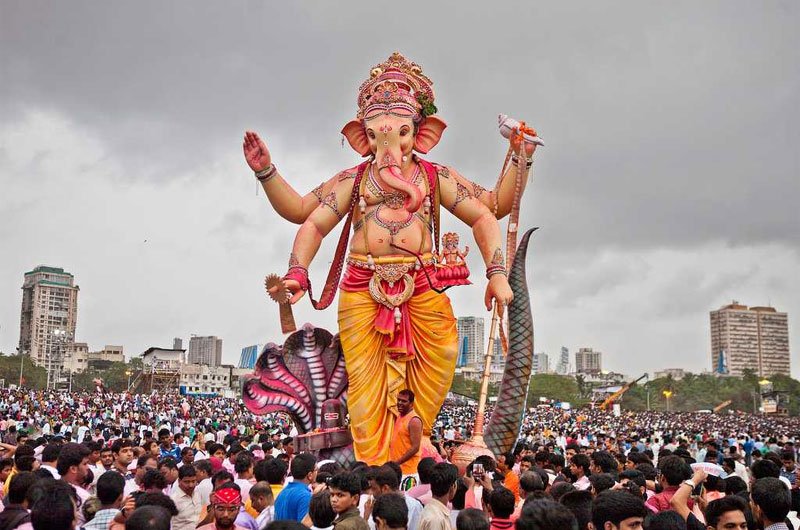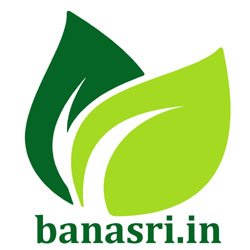
Festivals of Maharashtra: A Vibrant Tapestry of Tradition and Culture
Maharashtra’s festivals are a testament to its rich cultural diversity, deep-rooted traditions, and vibrant community life. Each festival, with its unique customs and celebrations, offers a glimpse into the colorful and dynamic heritage of this western Indian state.
1. Ganesh Chaturthi
Time of Festival
- Celebrated in August or September, lasting for ten days.
Specialty of the Festival
- Dedicated to Lord Ganesha, marked by the installation of Ganesha idols in homes and public pandals.
- Includes prayers, offerings, and elaborate processions for idol immersion (Visarjan).
- Known for the artistic craftsmanship of Ganesha idols and elaborate decorations.
Locality of the Festival
- Celebrated across Maharashtra, with major celebrations in Mumbai, Pune, and Nagpur.
Nature of the Festival
- Religious and cultural.
- Emphasis on devotion, community participation, and cultural performances.
- Features prayers, feasts, music, dances, and processions.
2. Diwali
Time of Festival
- Celebrated in October or November.
Specialty of the Festival
- Known as the festival of lights, symbolizing the victory of light over darkness.
- Homes are decorated with oil lamps, rangoli, and fireworks.
- Includes the exchange of sweets, gifts, and festive meals.
Locality of the Festival
- Celebrated across Maharashtra, in both urban and rural areas.
Nature of the Festival
- Religious and cultural.
- Emphasis on prosperity, family bonding, and community celebration.
- Features lighting of lamps, fireworks, feasts, and community gatherings.
3. Gudi Padwa
Time of Festival
- Celebrated in March or April, marking the beginning of the Marathi New Year.
Specialty of the Festival
- Involves the hoisting of a Gudi (decorated pole) outside homes, symbolizing victory and prosperity.
- Traditional dishes like Puran Poli and Shrikhand are prepared.
- Homes are cleaned and decorated with rangoli and mango leaves.
Locality of the Festival
- Celebrated across Maharashtra, especially in urban areas like Mumbai and Pune.
Nature of the Festival
- Cultural and religious.
- Emphasis on new beginnings, prosperity, and family bonding.
- Features rituals, feasts, and community gatherings.
4. Makar Sankranti
Time of Festival
- Celebrated on January 14th.
Specialty of the Festival
- Marks the transition of the sun into the zodiac sign of Capricorn (Makara).
- Involves the exchange of tilgul (sweets made of sesame seeds and jaggery) and greetings.
- Kite flying is a major activity during the festival.
Locality of the Festival
- Celebrated across Maharashtra, in both urban and rural areas.
Nature of the Festival
- Cultural and agricultural.
- Emphasis on the harvest season, community bonding, and joy.
- Features kite flying, feasts, and traditional rituals.
5. Janmashtami
Time of Festival
- Celebrated in August, marking the birth of Lord Krishna.
Specialty of the Festival
- Includes Dahi Handi, a popular event where teams form human pyramids to break a pot of curd hung high in the air.
- Temples and homes are decorated, and rituals are performed.
- Traditional songs and dances are part of the celebrations.
Locality of the Festival
- Celebrated across Maharashtra, with major events in Mumbai, Pune, and Nashik.
Nature of the Festival
- Religious and cultural.
- Emphasis on devotion, community participation, and joy.
- Features Dahi Handi events, prayers, and cultural performances.
6. Holi
Time of Festival
- Celebrated in March, marking the arrival of spring.
Specialty of the Festival
- Known as the festival of colors, involving playful throwing of colored powders and water.
- Features traditional songs, dances, and community feasts.
- Symbolizes the victory of good over evil and the end of winter.
Locality of the Festival
- Celebrated across Maharashtra, in both urban and rural areas.
Nature of the Festival
- Cultural and religious.
- Emphasis on joy, community bonding, and the celebration of spring.
- Features color throwing, dances, music, and feasts.
7. Eid-ul-Fitr and Eid-ul-Adha
Time of Festival
- Eid-ul-Fitr is celebrated at the end of Ramadan, while Eid-ul-Adha is celebrated about two months later.
Specialty of the Festival
- Eid-ul-Fitr involves breaking the fast with communal prayers, feasts, and charity.
- Eid-ul-Adha includes the ritual sacrifice of animals, prayers, and distribution of meat.
- Both festivals emphasize community bonding and charitable acts.
Locality of the Festival
- Celebrated across Maharashtra, with significant celebrations in regions with Muslim communities like Mumbai, Pune, and Aurangabad.
Nature of the Festival
- Religious and cultural.
- Emphasis on faith, charity, and community spirit.
- Features prayers, feasts, and charitable activities.
8. Navratri and Dussehra
Time of Festival
- Celebrated in September or October, lasting for nine nights (Navratri) and culminating in Dussehra.
Specialty of the Festival
- Navratri involves worship of the goddess Durga with fasting, prayers, and traditional dances like Garba and Dandiya.
- Dussehra symbolizes the victory of good over evil, commemorating Lord Rama’s victory over Ravana.
- Includes grand processions, effigy burning of Ravana, and cultural performances.
Locality of the Festival
- Celebrated across Maharashtra, with major celebrations in cities like Mumbai, Pune, and Nagpur.
Nature of the Festival
- Cultural and religious.
- Emphasis on devotion, tradition, and community participation.
- Features dances, prayers, processions, and festive activities.
9. Mahashivratri
Time of Festival
- Celebrated in February or March.
Specialty of the Festival
- Dedicated to Lord Shiva, involving night-long vigils, fasting, and prayers.
- Temples are decorated, and devotees offer milk, fruits, and bel leaves to Shiva.
- Traditional music and dance performances are part of the celebrations.
Locality of the Festival
- Celebrated across Maharashtra, with major events at prominent Shiva temples like the Trimbakeshwar Temple in Nashik.
Nature of the Festival
- Religious and spiritual.
- Emphasis on devotion, penance, and spiritual significance.
- Features prayers, rituals, and cultural performances.
10. Pola
Time of Festival
- Celebrated in August.
Specialty of the Festival
- A festival dedicated to the worship of bulls, marking the end of the monsoon season and the beginning of the harvest.
- Bulls are decorated with colorful ornaments and worshipped.
- Includes traditional dances, music, and feasts.
Locality of the Festival
- Predominantly celebrated in rural areas of Maharashtra.
Nature of the Festival
- Agricultural and cultural.
- Emphasis on gratitude, agricultural traditions, and community bonding.
- Features bull worship, dances, music, and feasts.
